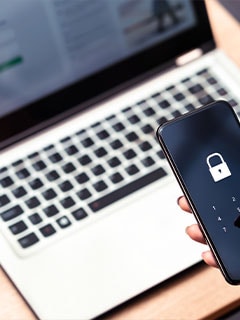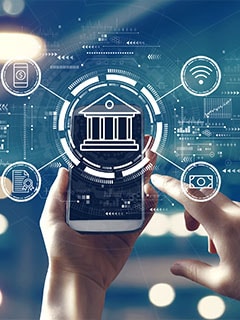CKYC Registry
-
Customer Service Contact us Service request Locate a branch
Find all the help you need
Scan the QR, get our app, and find help on your fingertips

Help CenterSupport topics, Contact us, FAQs and more
-
Login
Are you ready for an upgrade?
Login to the new experience with best features and services
-
Login
Are you ready for an upgrade?
Login to the new experience with best features and services
- Accounts
-
Deposits
IDFC FIRST Bank Deposits
View all Deposits -
Loans
IDFC FIRST Bank Loans
View all Loans - Wealth & Insure
-
Payments
IDFC FIRST Bank Payments
View all Payments -
Cards
IDFC FIRST Bank Cards
View all Cards - Blogs
- Corporate Account
-
Cash Management Services
IDFC FIRST Bank Cash Management Services
View all Cash Management Services - Supply Chain Finance
-
Corporate Lending
IDFC FIRST Bank Lending
View all -
Treasury
IDFC FIRST Bank Treasury
See more details - NBFC Financing
Support topics, Contact us, FAQs and more
- IDFC FIRST Bank Accounts
-
Savings Account
-
Corporate Salary
Account -
Senior Citizens
Savings Account -
First Power
Account -
Current Account
-
NRI Savings
Account -
TASC Institutional
Account -
Savings Account
Interest Calculator
- IDFC FIRST Bank Deposits
-
Fixed Deposit
-
Recurring Deposit
-
NRI Fixed Deposit
-
Safe Deposit Locker
-
FD Calculator
-
RD Calculator
- IDFC FIRST Bank Loans
-
Personal Loan
-
Consumer Durable
Loan -
Home Loan
-
Business Loan
-
Professional Loan
-
Education Loan
-
New Car Loan
-
Pre-owned Car Loan
-
Two Wheeler Loan
-
Pre-owned Two
Wheeler Loan -
Commercial Vehicle
Loan -
Gold Loan
-
Loan Against Property
-
Loan Against Securities
-
Easy Buy EMI card
-
Personal Loan
EMI Calculator -
Education Loan
EMI Calculator -
Home Loan
EMI Calculator
- IDFC FIRST Bank Wealth & Insure
-
FIRST Select
-
FIRST Wealth
-
FIRST Private
-
Mutual Funds
-
Sovereign Gold Bond
-
Demat Account
-
Term Insurance
-
Life Insurance
-
Health Insurance
-
General Insurance
-
Bonds
-
Loan Against
Securities -
Portfolio Management
Service
- IDFC FIRST Bank Payments
-
FASTag
-
Credit Card
Bill Payments -
UPI
-
Funds Transfer
-
Forex Services
-
Pay Loan EMI
- IDFC FIRST Bank Cards
-
Ashva :
Metal Credit Card -
Mayura :
Metal Credit Card -
FIRST Millennia
Credit Card -
FIRST Classic
Credit Card -
FIRST Select
Credit Card -
FIRST Wealth
Credit Card -
FIRST WOW!
Credit Card -
Deals
-
Debit Cards
-
Co-branded Cards
-
Credit Card
EMI Calculator -
FIRST Corporate
Credit Card -
FIRST Purchase
Credit Card -
FIRST Business
Credit Card
- Premium Metal Credit Cards
-
AshvaLifestyle1% Forex₹2,999
-
MayuraLifestyleZero Forex₹5,999
-
FIRST PrivateInvite Only
- Best for travellers
-
MayuraZero ForexMetal₹5,999
-
Ashva1% ForexMetal₹2,999
-
FIRST WOW!Zero ForexTravelLifetime Free
-
FIRST SWYPTravel OffersEMI₹499
-
FIRST Select1.99% ForexLifestyleLifetime Free
-
FIRST Wealth1.5% ForexLifestyleLifetime Free
-
Club VistaraTravelLifestyle₹4,999
-
IndiGo IDFC FIRST Dual Credit CardTravelLifestyle₹4,999
- Max benefits, Free for life
-
FIRST Classic10X RewardsShoppingNever Expiring Rewards
-
FIRST Millennia10X RewardsShoppingNever Expiring Rewards
-
FIRST Select10X RewardsLifestyle1.99% Forex
-
FIRST Wealth10X RewardsLifestyle1.5% Forex
-
FIRST WOW!RewardsTravelZero Forex
-
LIC ClassicRewardsInsuranceShopping
-
LIC SelectRewardsInsuranceShopping
- Reward Multipliers
-
AshvaLifestyleMetal₹2,999
-
MayuraLifestyleZero Forex₹5,999
-
FIRST ClassicNever Expiring RewardsShoppingLifetime Free
-
FIRST MillenniaNever Expiring RewardsShoppingLifetime Free
-
FIRST SelectNever Expiring RewardsLifestyleLifetime Free
-
FIRST WealthNever Expiring RewardsLifestyleLifetime Free
- Rewards & Credit on UPI
-
FIRST Power+FuelUPI₹499
-
FIRST PowerFuelUPI₹199
-
FIRST EA₹NVirtual1% Cashback₹499
-
FIRST DigitalVirtualUPI₹199
-
IndiGo IDFC FIRST Dual Credit CardUPITravelDual cards
- Fuel and Savings
-
FIRST PowerRewardsUPI₹199
-
FIRST Power+RewardsUPI₹499
-
LIC ClassicRewardsInsuranceShopping
-
LIC SelectRewardsInsuranceShopping
- Express and Flaunt
-
AshvaMetal1% Forex₹2,999
-
MayuraMetalZero Forex₹5,999
-
FIRST SWYPEMIOfferMAX₹499
-
FIRST MillenniaRewardsShoppingLifetime Free
- FD Backed rewarding Credit Cards for all
-
FIRST EA₹NVirtualCashback₹499
-
FIRST WOW!Zero ForexTravelLifetime Free
-
CreditPro Balance TransferTransfer & SaveReduce InterestPay Smartly
- IDFC FIRST Bank NRI Forex Solutions
-
Send money to India-Wire transfer
-
Send money to India-Digitally
-
Send money abroad
-
Max Returns FD (INR)
- IDFC FIRST Bank MSME Accounts
-
Platinum Current
Account -
Gold
Current Account -
Silver Plus
Current Account -
Merchant Multiplier
Account -
Agri Multiplier
Account -
TASC Institutional
Account -
Dynamic Current
Account -
World business
Account -
First Startup
Current Account
- IDFC FIRST Bank Business Loans
-
Business Loan
-
Professional Loan
-
Loan Against Property
-
Business Loan for Women
-
Working Capital Loan
-
Construction Equipment Loan
-
Machinery Loan
-
Healthcare Equipment Loan
- IDFC FIRST Bank Business Solutions
-
Payment Solutions
-
Tax Payments
-
Doorstep Banking
-
Point of Sale (POS)
-
Escrow Accounts
-
NACH
-
Payment Gateway
-
UPI
-
Virtual Accounts
-
As per amendment in the Income Tax Rules, PAN or Aadhaar are to be mandatorily quoted for cash deposit or withdrawal aggregating to Rupees twenty lakhs or more in a FY. Please update your PAN or Aadhaar. Kindly reach out to the Bank’s contact center on 1800 10 888 or visit the nearest IDFC FIRST Bank branch for further queries.
-
-
Most Searched
Sorry!
We couldn’t find ‘’ in our website
Here is what you can do :
- Try checking the spelling and search
- Search from below suggestions instead
- Widen your search & try a more generic keyword
Suggested
Get a Credit Card
Enjoy Zero Charges on All Commonly Used Savings Account Services
Open Account Now
Mobile Banking
How new-age banking is transforming the banking industry
Key Takeaways
New-age banking is the technology-driven transformation of the traditional banking system.
This transformation has given customers the convenience of online and mobile banking.
The use of blockchain, AI, cloud servers, etc., has secured and quickened banking services.
The IDFC FIRST Bank Mobile App keeps you updated with the latest banking technological breakthroughs.
Banking forms the backbone of any country’s economic system. As the Indian banking sector has evolved, it has given way from the traditional to a new-age system.
The banking services provided by new-age banks in India have improved tremendously over the last few decades. Technological advancements have seen every sector upgrade itself with various technological enhancements, like the introduction of online and digital banking in India.
Banking technology advancements have brought various solutions, such as online deposits, e-bill payments, digital account transfers, and mobile wallet usage. These advancements have reduced delayed transactions and longer turnaround times. Incorporating even newer technologies is transforming Indian banking significantly.
READ MORE
What comprises new-age banking?
Different types of modern banking services have emerged in the early phases of technology adoption. These include –
- Retail banking – Also called consumer banking, retail banking includes services such as credit and debit cards, loan sanctions, account information, and savings accounts.
- Mobile banking – Banking activities like account transfers, deposits, and monitoring of spending and earnings can now be done through mobile banking. With the IDFC FIRST Bank Mobile App, you can view and manage upcoming expenses or start an SIP in addition to all the regular banking activities.
- Online banking – Online or net banking allows you to access your bank accounts and banking profiles on a web browser. You can log on to your IDFC FIRST Bank Internet banking page and open a new account, apply for loans, send/receive money, save/invest, and do much more, all from the comfort of your home.
- Digital-only banking – Traditional banks are adopting the digital-only approach to promote the industry's transition into Banking as a Service (BaaS). The government has also identified digital-only banking as strategically important for financial inclusion.
What’s driving new-age banking?
The innovation and emergence of futuristic technologies have made the banking experience hassle-free for consumers. As a result, younger generations are more inclined towards digital banking in India. The growth of mobile technology is also changing the way financial services are delivered. Here are some tech trends that have influenced the Indian banking system and continue to do so –
- Open banking – Banks merge their financial data, strategies, and programs with third-party software in open banking. Then, a common interface for the customers is created through which they get access to the bank's services, such as the advancement of loans, credit cards, consultancy, fund remittance, etc. These platforms use Application Programming Interfaces (APIs) to establish the connection between the bank and the customers, allowing you to monitor all your finances in one place.
- Blockchain – Blockchain is a record-keeping technology that helps keep customers' bank details secure. It is suitably customised and implemented by the banking sector and can deter hackers from gaining confidential information. This high-tech security system is used by new-age banks in India to manage and store data in the form of digital ledgers.
- Biometrics – Biometric authentication in banking involves measuring one’s physical characteristics (such as face, fingerprints, retina, or voice) to confirm one’s identity. This technology helps secure payments made through mobile or online banking.
- Cloud banking – Cloud-based operating models help banks streamline advancement and cut down the IT costs of software and hardware. Banks do not have to buy the software, data, etc., but they can still interact with the marketplace changes on the go.
- Artificial Intelligence (AI) and Machine Learning (ML) – Implementing AI has helped banks administer high-speed data to get valuable customer information. The banking industry is applying AI in various ways, such as –
- Chatbots – Bank chatbots, created using ML and AI, handle customer requests and queries like fund transfers, mini bank statements, balance inquiries, etc.
- Robo advisors – Robo advisors are a new banking technology equipped to answer any financial queries that customers may have.
- Cybersecurity – AI has the potential to learn the patterns and indicators from any previous frauds and cyber threats. This is helping banks to develop fraud detection algorithms and risk modelling tools.
- Generative AI – It helps banks interpret large data sets with high accuracy in real-time. It can revolutionise banking functions like credit risk assessments.
Conclusion
Emerging technologies continue to be adopted in banking, thus providing the ultimate banking environment for consumers. They also enhance operational efficiency and the security infrastructure within the processes.
New-age banks in India, such as IDFC FIRST Bank, are a testament to this transformation in the banking sector. With features such as the Account Aggregator and the ease of online applications, the IDFC FIRST Bank Mobile App continues to stay at the forefront of the banking revolution.
Frequently Asked Questions
What is the new age of banking?
New-age banking leverages all the emerging technologies relevant to the banking industry. It features digitised banking services delivered to internet-savvy customers. Faster delivery of modern banking services, minimised physical effort and interaction, reduced paperwork, enhanced cybersecurity, and personalised services are some hallmarks of new-age banking.
What is the difference between traditional banking and new-age banking?
Traditional banking relies on the presence of a physical bank branch and in-person visits from customers. Although computerised, the need for paperwork was required, and many of the banking services were not available online. Unlike new-age banking, data processing and handling were slower in traditional banking, leading to a longer turnaround time in banking services.
Disclaimer
The contents of this article/infographic/picture/video are meant solely for information purposes. The contents are generic in nature and for informational purposes only. It is not a substitute for specific advice in your own circumstances. The information is subject to updation, completion, revision, verification and amendment and the same may change materially. The information is not intended for distribution or use by any person in any jurisdiction where such distribution or use would be contrary to law or regulation or would subject IDFC FIRST Bank or its affiliates to any licensing or registration requirements. IDFC FIRST Bank shall not be responsible for any direct/indirect loss or liability incurred by the reader for taking any financial decisions based on the contents and information mentioned. Please consult your financial advisor before making any financial decision.
The features, benefits and offers mentioned in the article are applicable as on the day of publication of this blog and is subject to change without notice. The contents herein are also subject to other product specific terms and conditions and any third party terms and conditions, as applicable. Please refer our website www.idfcfirstbank.com for latest updates.























